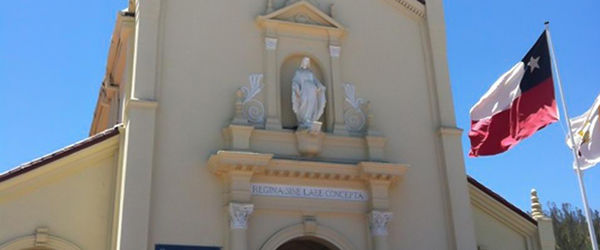LMU forum addresses criminal justice system issues including the death penalty..Because the public will decide the future of the death penalty in California, it is important to seek information regarding the matter, since it has a domino effect both on victims and offenders and their families.
That was one of the key points made at a recent restorative justice conference at Loyola Marymount University. Others included the need to review the criminal justice system in order to promote the treatment of the whole family; the start of a slow paradigm shift towards evidence-based sentencing; and the active participation of the victims in the conversation.
“Restorative justice promotes dialogue,” remarked Scott Wood, founder of Loyola Law School’s Center for Restorative Justice, during the center’s second annual conference, “Another Way: Imagining the Future of a Justice that Restores.” The Feb. 24 event was aimed at law students, restorative justice activists, lawyers, religious and public high school students.
“Love can fix what is broken in our criminal system,” Wood continued, after summarizing story of the foundation of the Society of Jesus and the mission of the first Jesuits, who “headed into the world looking for God in all things.”
“Courage,” Wood said, “is essential to restorative justice,” adding that many people are uninformed about the system and therefore indifferent.
Six million people are housed in jails or prisons, under probation or parole in the U.S., according to data provided by Wood. Every year about 200,000 teenagers are tried as adults (many sentenced to life without the possibility of parole), and 50,000 men spend many years in solitary confinement.
“But these numbers are small compared to the numbers of victims and survivors of crime and their families,” Wood continued, “and the majority of both victims and offenders are people of color and poor.”
Panelist Rhonda Foster, co-founder of the Evan Leigh Foster Foundation --- named after her son Evan was killed in a gang-related shooting --- said most victims feel as if they do not have rights in the courtroom. She advocated a more victim-inclusive justice system where “the victims are really respected.”
Other panelists included victims of violence Aqeela Sherrills (Resources for Human Development) and Azim Khamisa (Tariq Khamisa Foundation); U.S. Federal Appeals Judge Arthur Alarcón; Jeanne Woodford (Death Penalty Focus); Michael Brady (California Department of Corrections, Board of Parole Hearings); Sujatha Baliga (National Council on Crime and Delinquency); Jimmy Woo, former prisoner; and L.A. Councilmember Tony Cárdenas.
‘Why a death penalty?’
“Why do we have such difficulty in just saying it [death penalty] doesn’t work and we’ve got to get rid of it?” David Burcham, LMU president, asked California Chief Justice Tani Cantil-Sakauye, during a conversation that opened the presentations.
Although there has not been an execution in California since 2006, and 13 have been executed since the law was restored in 1977, there are 650 on the waiting list to death row, Burcham said.
Cantil-Sakauye said delays are caused by many procedural mechanisms and budget constraints. There should be, she asserted, an open debate about the effectiveness of the death penalty and whether or not it is still the will of the people.
If the death penalty is “the will of the people,” then we need to debate its effectiveness, she said. “And when we talk about effectiveness, by anyone’s definition, I don’t think anyone could say it’s working.”
She suggested looking at the law “with everyone at the table: defense, prosecution, victim groups, government groups that fund and oversee habeas corpus and automatic appeal prosecution to decide what is the best way to most effectively execute the will of the people.”
Then she added a footnote.
“We are in a world of compromise,” she noted. “There are intelligent, calculated negotiations in that language intended to be vague for many purposes, including to get a vote, to get a majority, to issue an opinion, to pass a statute, and to also develop the area.
“But,” she said, “we have to strike the balance and find mechanisms available to us if we think that whoever is striking that balance --- whether it’s judges, justices, federal or state, or legislators or governors --- are going beyond what we consider as a majority the intent of the law.”
Thanks to the wisdom of the country’s founders, she added, “we have an opportunity to remove that person from office.”
Regarding punishment of inmates, which Burcham described as a “pound of flesh,” Cantil-Sakauye commended programs such as Loyola’s Center for Restorative Justice that “move the paradigm.”
She said although the paradigm shift is slow and still in its infancy, “especially in California, we are beginning to see a shift to evidence-based sentencing. It’s a groundswell that comes from places like Loyola. That will help reduce recidivism 10-15 years from now.”
To reduce the incarceration rate she suggested starting at the “front end: the juvenile justice programs” and “seek to have an understanding of the development of the juvenile mind and the peer pressure of a juvenile mind and work in a way to preventing future prison inmates.”
She admitted the justice system has to address in some way what statistics show about a majority of inmates having witnessed horrific domestic violence at an early age.
“You’re right,” she told Father George Horan, co-director of the archdiocesan Office of Restorative Justice, who brought the issue to her attention. “We need to start more of an awareness of how to treat the whole family and start looking at how we prioritize the use of resources in the criminal justice system and because of its dependency, in the civil justice system as well.”
For more information about Loyola Law School’s Center for Restorative Justice, call (213) 736-1089 or visit www.lls.edu/crj.
{gallery width=100 height=100}gallery/2012/0316/loyolalaw/{/gallery}

